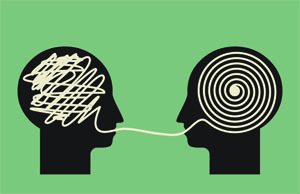Bsquared Consulting and E.G. Insight Meet with Aerospace Leaders to Share Best Practices for Using Business-to-Business Customer Feedback to Improve Quality
June 22, 2009An Uncomfortable Truth: Your Most Important Customers Are Talking About You
July 15, 2009Beyond Customer Satisfaction: What Really Makes B2B Customers Loyal?
If you’ve seen the results from a survey of your customers’ satisfaction, you probably walked away with three things:
- Findings – good and bad – that were close to what you expected.
- Data that surprised you – ratings that were higher or lower than expected or issues your customer had not previously raised.
- A lingering question – “Now what?”
What leaders really want from customer satisfaction surveys (or customer focus groups, or any customer feedback collection methods) are answers to those “big” questions. What levers can their organization pull to retain their most profitable accounts and turn customers into raving fans?
Loyalty versus Satisfaction
While measuring satisfaction is a valuable practice for many reasons, research shows that customer satisfaction ratings aren’t necessarily a clear indication of whether your customers will be loyal. In other words, satisfying your customers’ requirements might not be enough to maintain your competitive edge.
However, there is also research that shows that how willing a customer is to recommend you is a good indicator of future loyalty. If your customer is willing to put their own reputation on the line to recommend your product or service, chances are they’re going to be loyal.
Tracking your customers’ willingness to recommend can help you predict which customers are most committed to your organization, but it takes a combination of key questions to get to the drivers of what makes your customers loyal.
Kano’s Analysis: How it Works
Using a method first introduced by Noriaki Kano, regression is used to show which parts of the customer experience are most critical to increase their future buying behavior. A simplified example is shown below:
Step One: Measure customer satisfaction for key performance factors
Step Two: Measure how important each factor is to your customers
Step Three: Measure customers’ willingness to recommend you to a colleague
Step Four: Determine the strength of correlation between the following:
Independent variables (ratings of key factors)
and
Dependent variable (willingness to recommend)
This analysis will give you a plot of your key performance factors based on a customer’s stated importance (what the customer says is important) and derived importance (what the customer’s behaviors show to be important through the strength of the correlation).
By looking at the relationship between stated and derived importance, each area of performance can be categorized as follows:

- Key Drivers: High stated importance and high derived importance
Key Drivers represent areas that customers say are important to them and are closely linked to loyalty. Simply put, high marks in these areas are essential to sustainable competitive advantage. On the flip side, not living up to customers’ expectations in these areas will have a negative effect on loyalty. - Value Add: Low stated importance and high derived importance
Value Add areas are the unspoken motivators or opportunities to delight your customers. Often these are unexpected features or services that excite customers. These aspects of the customer experience can be what builds a unique value proposition and can differentiate a product or business from the competition. Identifying and excelling in these areas drives customer loyalty. - Expectations: High stated importance and low derived importance
Expectations are the areas in which poor performance can lead to dissatisfaction, but good performance will not necessarily raise loyalty. An example of this is seen in the temperature of coffee or tea. Hot is expected but won’t cause someone to be a raving fan. Cold, on the other hand, will leave a lasting negative impression. Conforming to expectations is critical, but you cannot rely on these areas alone to increase customer loyalty. - Low Yield: Low stated importance and low derived importance
Low Yield factors have a small impact on overall customer satisfaction; the customer states these things aren’t that important to them, and they don’t drive loyalty either. Taking a close look at the areas that are Low Yield can help you divert resources to things that actually matter.
What’s Next?
No matter how satisfied your customers are with your performance, there are bound to be opportunities for your organization to improve. But not all efforts to please your customers will have equal impact. Using the methods shown above, you can decipher what really drives customer loyalty and allocate your scarce resources – people, capital, time, energy, and creativity – toward efforts that will have the highest potential payoff.


